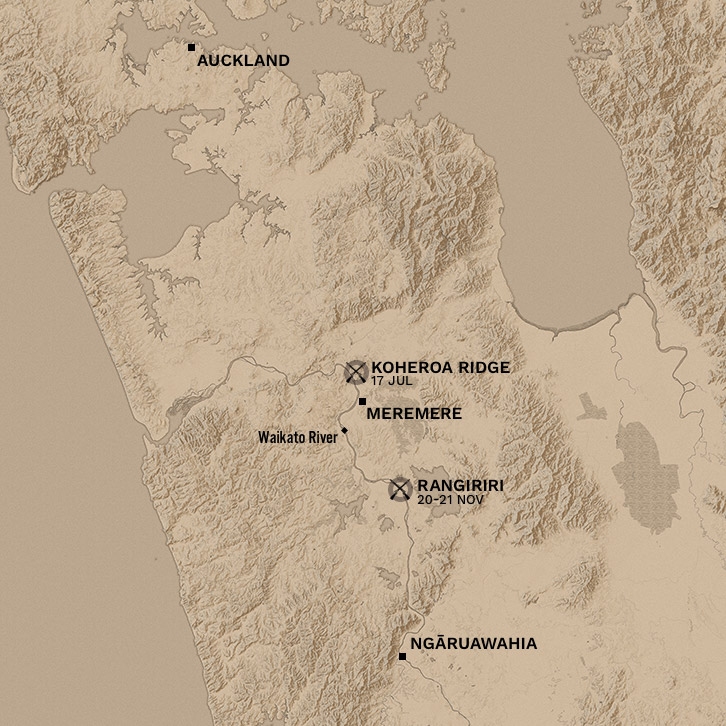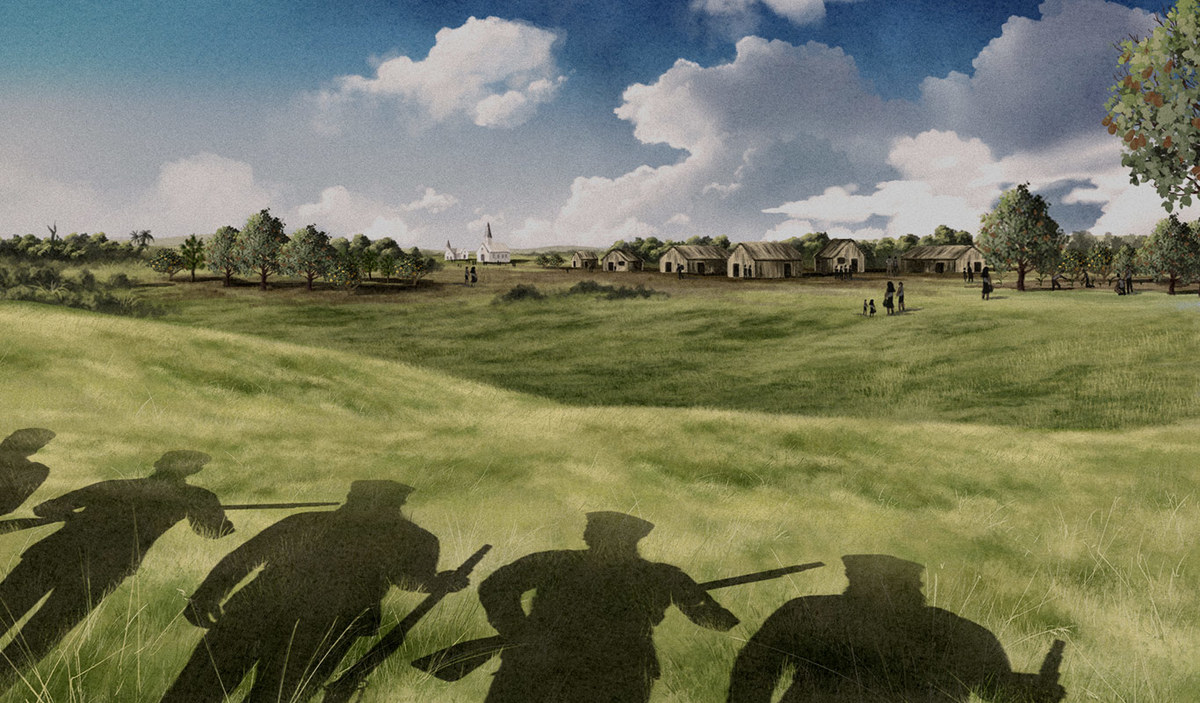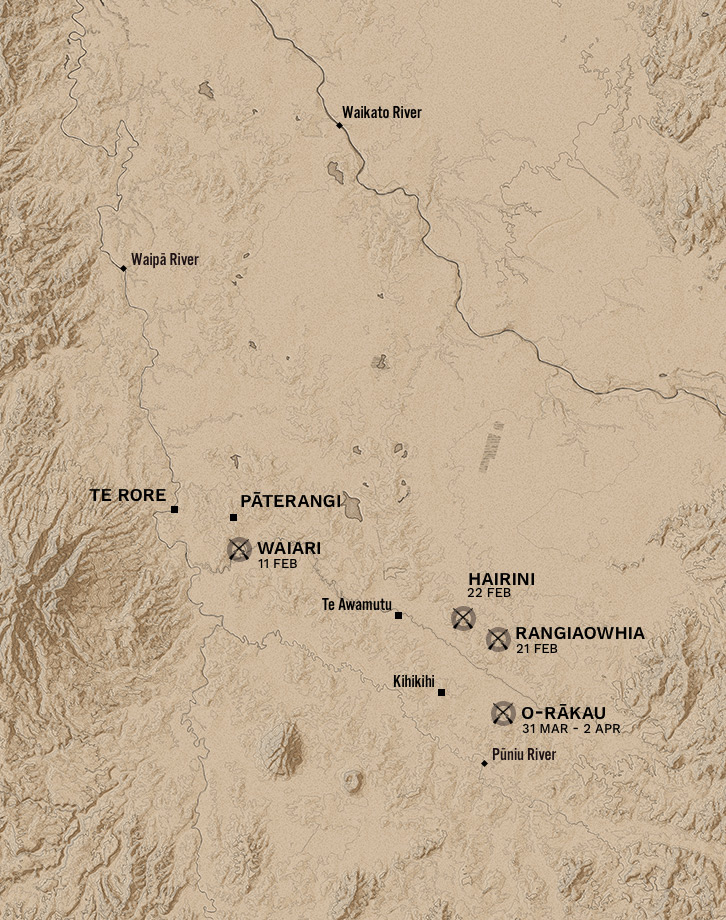War Breaks Out
Ka Pakaru mai te Riri

Military engagements were fought on the Koheroa Ridge on 17 July 1863. An entrenched defensive site at Meremere was bypassed in late October with the aid of gunboats on the river while the defenders fell back on Rangiriri. Progress by the Imperial Army was halted between mid-July and October by the need to defend sites along the Great South Road and in the Pukekohe district – where Māori based in the Hunua Ranges and Ngāti Maniapoto warriors, from the Waikato River, tied down troops with guerrilla actions to the rear of the advancing army.
A significant battle for the Waikato followed at Rangiriri on 20-21 November 1863 when 1,500 troops with artillery, supported by gunboats, eventually overcame a force numbering about 500 supporters of the Kīngitanga in well-designed earthworks. However, none of these actions resulted in the decisive victory sought by Governor Grey and General Cameron. In each case, large numbers of Māori defenders escaped across adjoining swamps, and although 183 prisoners were taken at Rangiriri, the cost in British casualties was high.
By 8 December 1863 the British flag was flying at Ngāruawahia, at the confluence of the Waipā and Waikato rivers. General Cameron occupied what had been the headquarters of King Tāwhiao, although they were deserted when he reconnoitred it from the gunboat Pioneer prior to occupation. It was here that he consolidated his force during December before moving into the Waipā valley in early 1864.
I tū ngā whawhai i te pae o Koheroa i te 17 o Hūrae, 1863. I tōhipa noa iho i tētehi maioro i Meremere i te hiku o Oketopa, me te āwhina a ngā manuao i te awa, nō te rerenga o ngā kaiārai ki Rangiriri. I parea te kōkiritanga o te Taua Karauna i waenga i te puku o Hūrae me te Oketopa, i te aronga ki te tiaki i ngā wāhi i te rori o Great South i te takiwā o Pukekohe – ko ngā Māori i ngā pae o Hunua nō Waikato, me ngā toa o Ngāti Maniapoto, i ārai i ngā hōia mā te whawhai tukipoto i te hiku o te taua whakaeke.
I tū tētehi pakanga nui mō Waikato i Rangiriri i te 20-21 o Noema, nō te whakaekehanga a ngā hōia whai pū 1,500 nei, i tautokongia hoki e ngā manuao, i tētehi ope 500 nei o ngā toa Kīngitanga i ngā maioro. Heoi anō, kāore a Kāwana Hōri Kerei rāua ko Tianara Kāmariera, i tino toa i ēnei pakanga. I tēnā puta, i tēnā puta, he nui ngā kaipapare Māori i rere atu ai i ngā repo tata nei, ahakoa 183 ngā herehere Māori o Rangiriri i mau ai, he nui te utu tangata o ngā hōia.
I te 8 o Tīhema 1863, e tare ana te kara Peretania ki Ngāruawāhia, ki te huinga wai o Waipā me Waikato. I noho a Tianara Kāmariera i te takuahi o mua a Kīngi Tāwhiao, ahakoa rā kua whakarerea taua takuahi, nōna ka torotoro mai i te manuao o te Pioneer i mua mai i te noho muru. I konei i whakatōpū i tana taua i te Tīhema, i mua i te nekehanga ki te riu o Waipā, i te upoko o te 1864.


